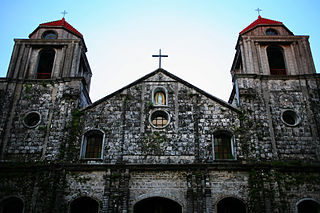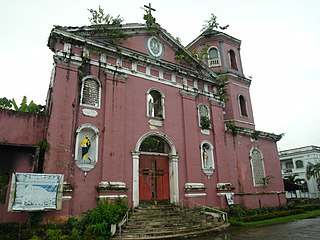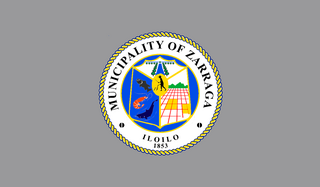
Sibulan, officially the Municipality of Sibulan, is a second class municipality in the province of Negros Oriental, Philippines. According to the 2020 census, it has a population of 64,343 people.

Libacao, officially the Municipality of Libacao, is a 3rd class municipality in the province of Aklan, Philippines. According to the 2020 census, it has a population of 28,272 people.

Binalbagan, officially the Municipality of Binalbagan, is a 1st class municipality in the province of Negros Occidental, Philippines. According to the 2020 census, it has a population of 71,407 people.

Enrique B. Magalona, officially the Municipality of Enrique B. Magalona, also known simply as E. B. Magalona and formerly known and still commonly referred to as Saravia, is a 2nd class municipality in the province of Negros Occidental, Philippines. According to the 2020 census, it has a population of 64,290 people.

La Castellana, officially the Municipality of La Castellana, is a 1st class municipality in the province of Negros Occidental, Philippines. According to the 2020 census, it has a population of 79,492 people.

Pulupandan, officially the Municipality of Pulupandan, is a 3rd class municipality in the province of Negros Occidental, Philippines. According to the 2020 census, it has a population of 30,117 people.

Valladolid, officially the Municipality of Valladolid, is a 4th class municipality in the province of Negros Occidental, Philippines. According to the 2020 census, it has a population of 39,996 people.

Sibunag, officially the Municipality of Sibunag, is a 4th class municipality in the province of Guimaras, Philippines. According to the 2020 census, it has a population of 23,162 people, making it the least populated municipality in the province.

San Lorenzo, officially the Municipality of San Lorenzo, is a 5th class municipality in the province of Guimaras, Philippines. According to the 2020 census, it has a population of 29,444 people.

San Miguel, officially the Municipality of San Miguel, is a 4th class municipality in the province of Bohol, Philippines. According to the 2020 census, it has a population of 25,356 people.

Dumalag, officially the Municipality of Dumalag, is a 4th class municipality in the province of Capiz, Philippines. According to the 2020 census, it has a population of 30,098 people.

Dumarao, officially the Municipality of Dumarao, is a 2nd class municipality in the province of Capiz, Philippines. According to the 2020 census, it has a population of 49,506 people.

Jamindan, officially the Municipality of Jamindan, is a 2nd class municipality in the province of Capiz, Philippines. According to the 2020 census, it has a population of 38,670 people.

Pontevedra, officially the Municipality of Pontevedra, is a 3rd class municipality in the province of Capiz, Philippines. According to the 2020 census, it has a population of 49,725 people.

Sigma, officially the Municipality of Sigma, is a 4th class municipality in the province of Capiz, Philippines. According to the 2020 census, it has a population of 31,688 people.

Badiangan, officially the Municipality of Badiangan, is a 4th class municipality in the province of Iloilo, Philippines. According to the 2020 census, it has a population of 27,056 people.

Barotac Viejo, officially the Municipality of Barotac Viejo, is a 3rd class municipality in the province of Iloilo, Philippines. According to the 2020 census, it has a population of 48,614 people.

Lambunao, officially the Municipality of Lambunao, is a 1st class municipality in the province of Iloilo, Philippines. According to the 2020 census, it has a population of 81,236 people.

San Miguel, officially the Municipality of San Miguel, is a 4th class municipality in the province of Iloilo, Philippines. According to the 2020 census, it has a population of 30,115 people.

Zarraga, officially the Municipality of Zarraga, is a 4th class municipality in the province of Iloilo, Philippines. According to the 2020 census, it has a population of 27,305 people.

























